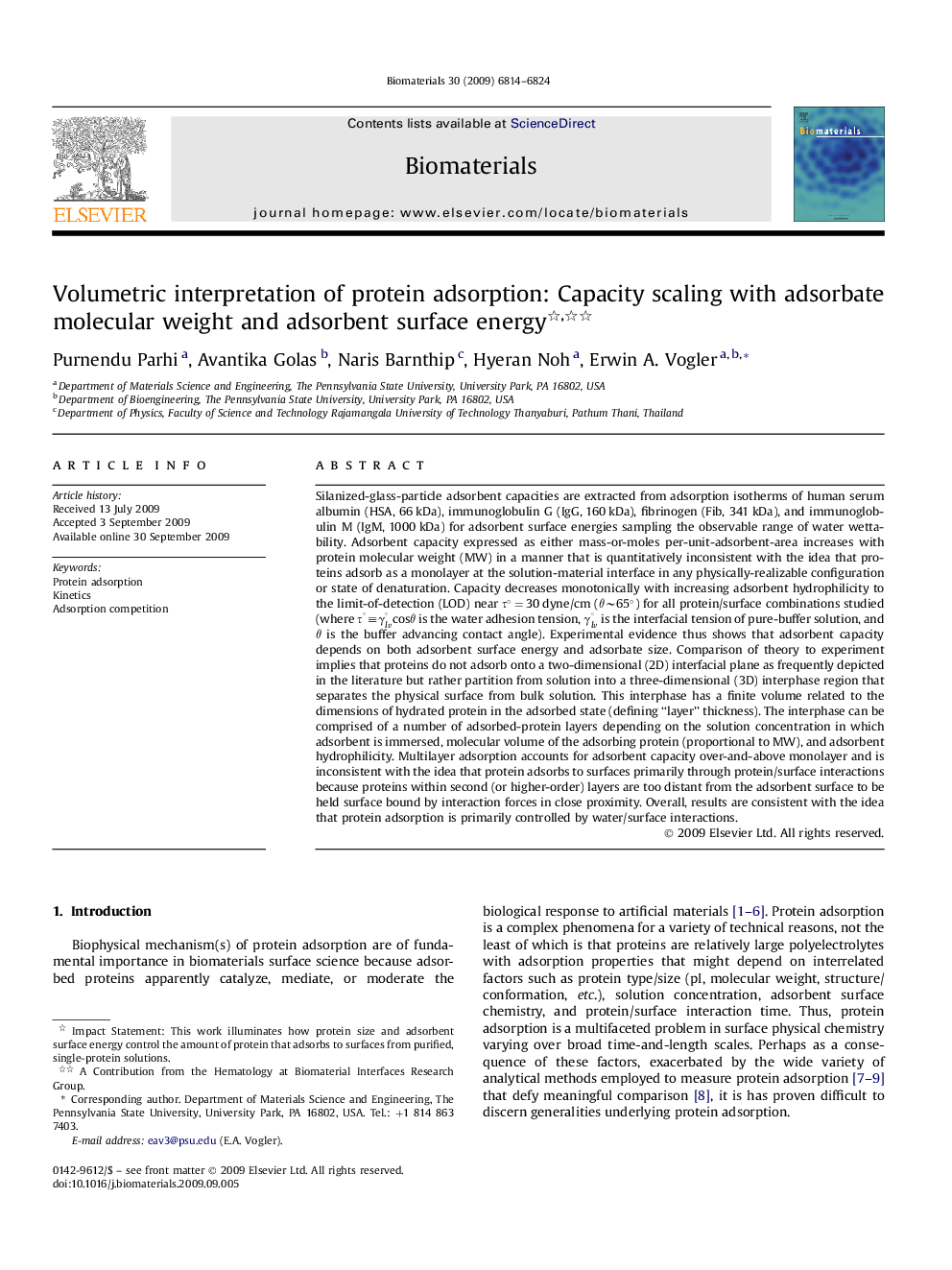| کد مقاله | کد نشریه | سال انتشار | مقاله انگلیسی | نسخه تمام متن |
|---|---|---|---|---|
| 8764 | 605 | 2009 | 11 صفحه PDF | دانلود رایگان |

Silanized-glass-particle adsorbent capacities are extracted from adsorption isotherms of human serum albumin (HSA, 66 kDa), immunoglobulin G (IgG, 160 kDa), fibrinogen (Fib, 341 kDa), and immunoglobulin M (IgM, 1000 kDa) for adsorbent surface energies sampling the observable range of water wettability. Adsorbent capacity expressed as either mass-or-moles per-unit-adsorbent-area increases with protein molecular weight (MW) in a manner that is quantitatively inconsistent with the idea that proteins adsorb as a monolayer at the solution-material interface in any physically-realizable configuration or state of denaturation. Capacity decreases monotonically with increasing adsorbent hydrophilicity to the limit-of-detection (LOD) near τ° = 30 dyne/cm (θ∼65° ) for all protein/surface combinations studied (where τ°≡γlv°cosθ is the water adhesion tension, γlv° is the interfacial tension of pure-buffer solution, and θ is the buffer advancing contact angle). Experimental evidence thus shows that adsorbent capacity depends on both adsorbent surface energy and adsorbate size. Comparison of theory to experiment implies that proteins do not adsorb onto a two-dimensional (2D) interfacial plane as frequently depicted in the literature but rather partition from solution into a three-dimensional (3D) interphase region that separates the physical surface from bulk solution. This interphase has a finite volume related to the dimensions of hydrated protein in the adsorbed state (defining “layer” thickness). The interphase can be comprised of a number of adsorbed-protein layers depending on the solution concentration in which adsorbent is immersed, molecular volume of the adsorbing protein (proportional to MW), and adsorbent hydrophilicity. Multilayer adsorption accounts for adsorbent capacity over-and-above monolayer and is inconsistent with the idea that protein adsorbs to surfaces primarily through protein/surface interactions because proteins within second (or higher-order) layers are too distant from the adsorbent surface to be held surface bound by interaction forces in close proximity. Overall, results are consistent with the idea that protein adsorption is primarily controlled by water/surface interactions.
Journal: Biomaterials - Volume 30, Issue 36, December 2009, Pages 6814–6824